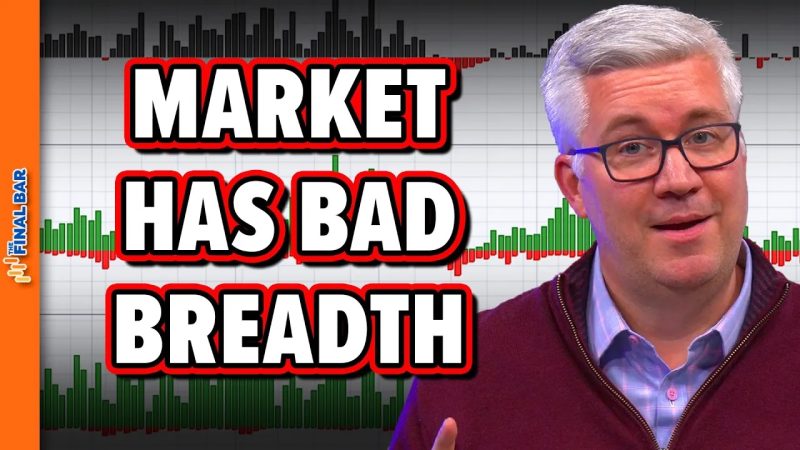Market Breadth: An Insight into the Concerns and Realities
Understanding market breadth is crucial for investors to comprehend the overall health and direction of the stock market. It serves as an essential indicator to gauge the participation and strength of the market. However, there have been growing concerns about poor market breadth in recent times, prompting investors to question its implications and potential risks. Let’s delve deeper into this subject to gain clarity and insights on whether you should be worried about poor market breadth.
Market breadth refers to the measure of the number of assets that are participating in a market upswing or downturn. It provides a broader perspective on the market performance beyond just focusing on a few prominent stocks. Poor market breadth occurs when a small number of stocks are driving the market higher, while a majority of stocks are struggling or in a downtrend. This disparity can raise red flags for investors as it may indicate a lack of broad-based market support and sustainability.
One of the primary concerns associated with poor market breadth is the fragility of the market rally. When the strength of the market is concentrated in a few stocks, it becomes vulnerable to sharp corrections if these leading stocks face selling pressure or negative news. This lack of diversity in market participation can amplify market volatility and increase the risk of a broader market sell-off.
Furthermore, poor market breadth can also signal underlying weaknesses in the market fundamentals. If only a handful of stocks are driving the market higher while the majority of stocks are underperforming, it may indicate that the rally is not backed by strong fundamentals or broad economic growth. In such scenarios, investors need to be cautious and vigilant as the market rally may not be sustainable in the long run.
Investors should also consider the impact of poor market breadth on their investment portfolios. A market driven by a few stocks may lead to an overconcentration of risk, especially if these stocks are overvalued or exposed to specific risks. Diversification, which is a fundamental strategy to mitigate risk, may become challenging in such market conditions, potentially exposing investors to higher levels of risk and volatility.
Despite the concerns surrounding poor market breadth, it is essential for investors to adopt a balanced approach and not make hasty decisions based solely on this indicator. Market breadth is just one of the many tools available to assess the market environment, and it should be interpreted in conjunction with other key indicators and market analysis.
In conclusion, while poor market breadth can raise valid concerns about the sustainability and health of the market rally, it should not be viewed in isolation. Investors should consider a comprehensive range of factors and indicators to make well-informed investment decisions. By staying informed, diversified, and adaptable, investors can navigate through market uncertainties and position themselves strategically for long-term success.

